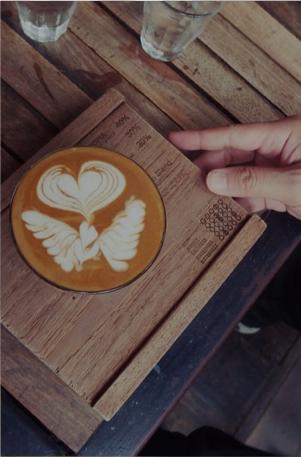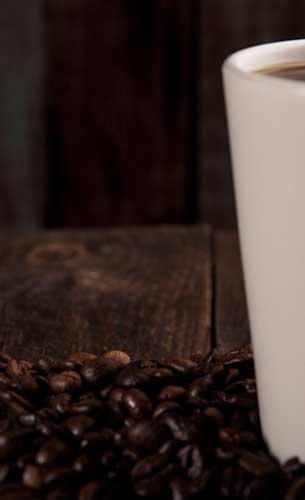
Most people are more familiar with wine tastings, but coffee cuppings are equally fun and interesting as an entertaining, informative event. Cupping is one of the methods coffee cuppers use to evaluate aromas and flavor profiles. Of course, you don’t have to be a seasoned expert to enjoy a good cupping session; you can do it at home with your friends.
Coffee cupping is a great way to gain new appreciation for different types of beans from all over the world. And if you’re a relative newcomer to the world of coffee connoisseurs, don’t be intimidated. Sure, your fellow tasters may be able to describe their beverages with purple prose worthy of Charles Dickens, but remember: your opinion is every bit as valid, and you don’t need to be a Master Taster to
appreciate great flavor during a coffee tasting.
How Coffee Cupping Is Done
Okay, so now that we’ve talked about the basic concept of coffee cupping, let’s see how it’s done.

To start off, you’ll want to select a range of different coffees for the tasting. It’s a good idea to
choose beans from a wide array of growing regions so you can fully appreciate the immense variety of flavors and aromas that beans can have. The beans should all be light to light-medium roast. You might not notice the difference from day to day, but tasting and smelling different beans in close succession really brings out the contrast.
Once you’ve chosen the beans, you’ll need to set the stage. The setting doesn’t need to be fancy, but there are a few things you can do to optimize the coffee cupping experience. First, eliminate distractions. The cupping should take place in a well-lit, clean, and quiet environment that is relatively free of odors. You may want to ask the participants of the coffee tasting to turn off their phones while the cupping is underway, and you should never have television or music playing during the session. The goal is to be focused solely on the drinks.
Getting Ready for the Coffee Cupping Session
With the groundwork laid, we’re ready to prep the samples. Pour each of your bean selections into cups, being careful to note which is which. If you’re doing a blind coffee cupping, you’ll want to put post-it notes or tape on the bottom of each.
According to the Specialty Coffee Association of America, the cupping glasses should be ceramic or tempered glass, with a capacity of 7-9 fluid ounces and a top diameter of 3-3.5 inches. They should all be identical. If you don’t have cups that fit the bill, you can order cupping glasses online if you really want to make it official.
Start your water boiling before you grind the beans. That way, it will be ready when you are. The ideal temperature is 202 degrees Fahrenheit, but as long as you’re in the ballpark, you’ll be just fine.
When you grind the beans, aim for a medium consistency, like you would when making drip coffee or French press. Clean the grinder between samples to prevent cross-contamination.
Smell each sample as the water is coming to a boil, making notes on the aroma. Now pour about 6.5 oz of water into each sample, starting with the oldest grind first and wait 4 minutes.
Stage Two of Your Coffee Cupping Event
Now it’s time to “break the crust.” Get your face close to each cup, and with your cupping spoon, break the layer of grounds that have gathered on the surface of each sample, and slowly run the spoon across the surface, from front to back, inhaling as you go. What an aroma!
Ideally, each of your fellow cuppers will get first dibs on breaking the crust of at least one sample. Make sure you dip your cupping spoon in a pint glass of water between samples so you don’t mix them together, and repeat the process for each sample.
Now it’s time to taste the drinks. Take one small spoonful at a time and slurp it into your mouth while gently inhaling, like you would if tasting wine. You want to get the full effect of the flavor profile coupled with the wonderful aromatics, so take it slow, and make sure each coffee cupping sample coats your whole tongue. You don’t have to swallow your samples, but it’s a good idea to swallow just a little bit so you can evaluate the aftertaste.
Make notes on each sample as you go. Professionals
evaluate coffee on a few key criteria, including mouth feel, sweetness acidity, flavor, and aftertaste. Don’t worry if you don’t know the Master Taster’s argot. Just describe it in your own words, and compare notes with your friends.
That’s it! We hope you had as much fun as we did during our first cupping experience!
 Most people are more familiar with wine tastings, but coffee cuppings are equally fun and interesting as an entertaining, informative event. Cupping is one of the methods coffee cuppers use to evaluate aromas and flavor profiles. Of course, you don’t have to be a seasoned expert to enjoy a good cupping session; you can do it at home with your friends.
Coffee cupping is a great way to gain new appreciation for different types of beans from all over the world. And if you’re a relative newcomer to the world of coffee connoisseurs, don’t be intimidated. Sure, your fellow tasters may be able to describe their beverages with purple prose worthy of Charles Dickens, but remember: your opinion is every bit as valid, and you don’t need to be a Master Taster to appreciate great flavor during a coffee tasting.
Most people are more familiar with wine tastings, but coffee cuppings are equally fun and interesting as an entertaining, informative event. Cupping is one of the methods coffee cuppers use to evaluate aromas and flavor profiles. Of course, you don’t have to be a seasoned expert to enjoy a good cupping session; you can do it at home with your friends.
Coffee cupping is a great way to gain new appreciation for different types of beans from all over the world. And if you’re a relative newcomer to the world of coffee connoisseurs, don’t be intimidated. Sure, your fellow tasters may be able to describe their beverages with purple prose worthy of Charles Dickens, but remember: your opinion is every bit as valid, and you don’t need to be a Master Taster to appreciate great flavor during a coffee tasting.
 To start off, you’ll want to select a range of different coffees for the tasting. It’s a good idea to choose beans from a wide array of growing regions so you can fully appreciate the immense variety of flavors and aromas that beans can have. The beans should all be light to light-medium roast. You might not notice the difference from day to day, but tasting and smelling different beans in close succession really brings out the contrast.
Once you’ve chosen the beans, you’ll need to set the stage. The setting doesn’t need to be fancy, but there are a few things you can do to optimize the coffee cupping experience. First, eliminate distractions. The cupping should take place in a well-lit, clean, and quiet environment that is relatively free of odors. You may want to ask the participants of the coffee tasting to turn off their phones while the cupping is underway, and you should never have television or music playing during the session. The goal is to be focused solely on the drinks.
To start off, you’ll want to select a range of different coffees for the tasting. It’s a good idea to choose beans from a wide array of growing regions so you can fully appreciate the immense variety of flavors and aromas that beans can have. The beans should all be light to light-medium roast. You might not notice the difference from day to day, but tasting and smelling different beans in close succession really brings out the contrast.
Once you’ve chosen the beans, you’ll need to set the stage. The setting doesn’t need to be fancy, but there are a few things you can do to optimize the coffee cupping experience. First, eliminate distractions. The cupping should take place in a well-lit, clean, and quiet environment that is relatively free of odors. You may want to ask the participants of the coffee tasting to turn off their phones while the cupping is underway, and you should never have television or music playing during the session. The goal is to be focused solely on the drinks.


